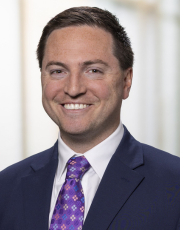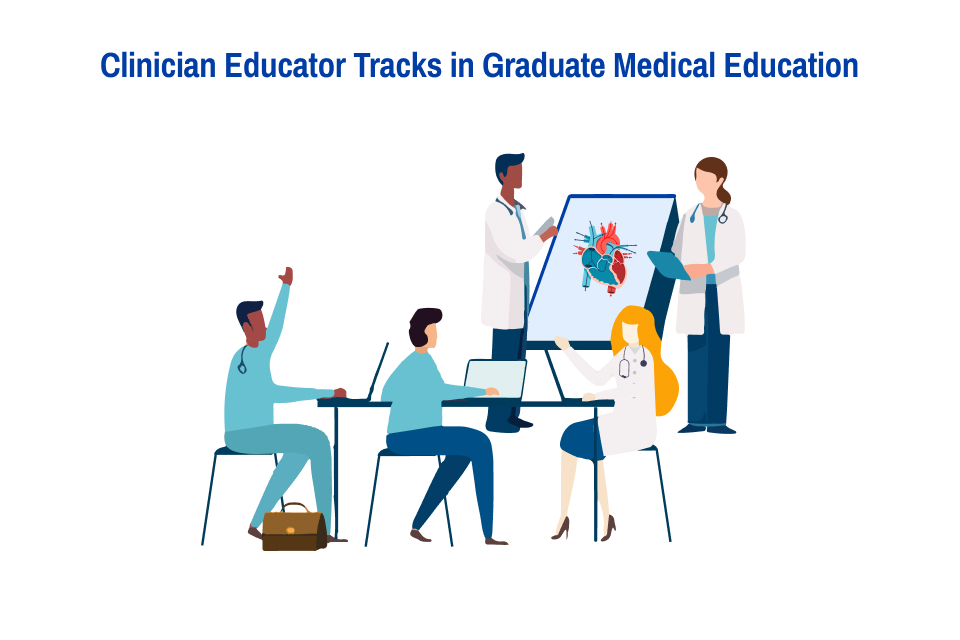Clinician Educator Tracks in Graduate Medical Education
Physicians are trained through a mixture of bedside teaching, didactic sessions and self-directed learning activities. To effectively meet the needs of learners, clinician-educators must be excellent physicians who are up to date on the latest medical knowledge. They must also be excellent examples of bedside manner, modeling strong communication skills and a patient-centered approach.
Effective clinician-educators are dynamic and adaptive, interfacing with trainees in various stages of training across several unique environments. Formal lectures, small group facilitation, and bedside teaching each require different skills, and the best clinician-educators switch freely between these skills to optimize the educational experience. To develop medical educators who possess these crucial educational skills in addition to clinical competence, many graduate medical education (GME) programs have developed “clinician educator tracks” (CETs).
What is a Clinician Educator Track?
Generally, a CET consists of a set of activities, experiences and requirements that a resident or fellow completes in addition to meeting the requirements for successful completion of residency or fellowship. CETs promote skills needed to be an effective clinician-educator, such as curriculum development, teaching methods, assessment, mentorship, and educational scholarship. There is significant variability between the components and structure of CETs across institutions.
Commonalities Among Clinician Educator Tracks
One recent literature review defined CETs by three common factors. First, a CET must target GME trainees. Efforts to develop educators that focus on medical students or allied health professionals are important but are not considered CETs. Second, a CET must be longitudinal in nature. One-off trainings, retreats, or capstone projects may facilitate growth as an educator, but are not sufficient to be independently considered a CET. Finally, a CET must have the primary aim of developing trainees into clinician-educators. Tracks that focus on developing researchers or increasing patient-care skills are not CETs. An additional cornerstone of CETs is having dedicated faculty to serve as leaders, teachers, and mentors. Other central components include formal didactic or active learning curricula and, in most cases, the requirement of a scholarly education project.
Differences Between Clinician Educator Tracks
While the primary focus of CETs is generally consistent, educators have developed a wide array of pathways in pursuit of this goal. The length of the longitudinal program varies; some programs enroll CET participants prior to the beginning of the GME program, while others may wait until one or two years of graduate medical education training have been completed. Some tracks are administered directly from an institutional entity, such as an Office of Graduate Medical Education or Department of Medical Education and open to applicants across all GME programs. More commonly, a single residency or fellowship program develops and administers a CET. Some programs limit the number of trainees who can enroll in their CET, while others are open to all interested trainees who meet admission requirements.
The single greatest difference between programs may also be the single most important component of CETs. This difference is intuitional support. To characterize and consider the role of an institution in supporting a CET, CETs can consider the following questions: Does the trainee receive protected time to participate? Does the trainee receive financial support to disseminate potential scholarly work at professional conferences? Does the institution protect faculty time to design, implement, and evaluate CETs? The answers to these questions vary widely across institutions. The presence or absence of material institutional support can have a considerable impact on the success and longitudinal viability of CETs.
Clinician Educator Tracks and Institutional Identity
Institutions and programs can develop CETs specifically tailored to their mission and strategic priorities. Given the propensity of physicians to practice near their GME site, institutions have an opportunity to deliberately develop clinician-educators that align with their institutional identity. This is a significant opportunity for institutions to develop their future workforce with the skills required to thrive in their particular environment. It also allows institutions to produce graduates that will bring specific qualities and skills to their future training sites, spreading the reach and reputation of the training institution.
For a Jesuit institution, CETs represent an opportunity to develop clinician-educators centered around core Jesuit values. As an example, CETs at a Jesuit institution may focus on supporting trainees in the spirit of cura personalis. The track might be explicitly designed to support participants in the three crucial areas of mind, body, and spirit. A CET with a Jesuit focus should cultivate space for reflection and personal growth in addition to facilitating professional development. CETs at a Jesuit institution might uniquely focus on the mission critical call of service to others by promoting pathways for affecting positive change in the lives of colleagues, trainees, and patients. CETs represent an opportunity for Jesuit institutions to foster participant vocations, helping them to find meaning in the rich experiences of education and healing.

Mark Mullen, M.D., is assistant professor of psychiatry and the psychiatry clerkship director at Saint Louis University's School of Medicine and SSM Health. Mullen's areas of professional interest include the UME to GME transition, simulation-based education, and medical education podcasting. Mullen can be followed on X or Bluesky.
